Let's begin this (timely; keep your fingers crossed) roundup with Justice Society of America #6, Part 4 of "The Lightning Saga" (written by Geoff Johns, pencilled by Dale Eaglesham, inked by Ruy Jose). This chapter's big mash-up involves the reconstitution of old-timey Legion foe Computo in Suicide Swamp, itself the old home of both Solomon Grundy and the Legion of Doom's Vader-helmet headquarters. (Dialogue says it belonged to the Secret Society of Super-Villains, but same difference.) That the Justice League just got through fighting Solomon Grundy in its first arc is never brought up, although goodness knows everyone gets ample time to compare notes.
That brings me to my main complaint about the issue: ach, the talking! Right from the first page, the reader is bombarded with information -- head-shots of the JLA and JSA, paragraphs of Superman's exposition comparing and contrasting the various teams, panels cluttered with characters -- and we haven't even gotten to the Legion's formal introduction yet. Both Brad Meltzer and Geoff Johns are so enamored of the plain fact that the JLA and JSA are getting together again (eee!) and they're meeting the no-foolin' Earth-1 Legion (!!!) that all the teams can do is tell us about it. To me it's indicative of the story's tone that the actual three-team battle against Computo is summed up largely by one double-page spread. It goes on for some five pages after that, and it started three pages before, so it's about half of the issue, but it just doesn't seem paced right. Maybe it's Jose's inks: they don't quite flatten everything out, but they don't do a lot to make the characters pop against the dense swamp background. Neither do Jeromy Cox's colors, for that matter. Anyway, since the Legion's fighting Computo, someone's gotta die -- or does she? We're down to the last installment and it still feels like a long way to go.
(Finally, obligatory Alex Ross cover gripe: nothing whatsoever indicates this is Part 4 of an inter-title crossover, and it features only Damage, who's hardly the center of the story.)
Next up is the week's second Geoff Johns book, Green Lantern #20 (drawn and colored by Daniel Acuna), which wraps up the Star Sapphire arc for now. While the arc hasn't been nearly as bad as I thought, I'm still not quite sure how I feel about it. First, Acuna's art is very good, but he draws Hal about ten years younger than he should be. Second, I have an uncomfortable feeling that the whole Sinestro Corps/Sapphire Corps angle will wind up with some new Grand Unified Theory of Power Rings that the mythology doesn't really need. Third, I liked the idea that Carol Ferris had moved on after Hal, because as we all know, Hal and Carol's relationship was poison to the idea of him being Green Lantern. In fact, one of the things I did like about this arc was the maturity Hal and Carol showed with regard to each other. The suggestion that they're still in wuv is a frustrating indication that the title doesn't want to move forward. All that notwithstanding, the Sinestro Corps backup (drawn by Dave Gibbons) was another fine little horror story, and it gives me hope for the Sinestro Corps arc.
Are we really just on Amazons Attack #2 (written by Will Pfeifer, drawn by Pete Woods)? With two issues of Wonder Woman supplementing AA #1, it feels like we're a lot farther into the story than that. Because I read those issues (and the issue of Manhunter which linked Everyman with Circe), I felt a lot more comfortable with this issue. The Justice League starts making battle plans, Donna Troy confronts Hippolyta, and the Amazons open up two more fronts. I thought it was a well-paced issue, maintaining a lot of subplots fairly well. However, it has the potential to sprawl out into a big goopy mess, and I don't like the idea that Donna's story will continue in Countdown (with Jason Todd, I presume). As for the art, I like Pete Woods a whole lot, even if he does draw (regular) ears under the Bat-cowl.
I was a little disappointed by Action Comics #850, the week's third (yikes) Geoff Johns title (i.e., written by Kurt Busiek, Johns, and Fabian Nicieza, pencilled and colored by Renato Guedes, inked by Jose Wilson Magalhaes). Not because of Johns specifically, because I haven't picked out what his contributions were. No, I expected more of a resolution to the Supergirl-Legion (mainline, that is) question, but instead I got another retelling of Superman's origin and his relationship to Kara Zor-El. On balance, though, it read fine. There were the familiar skips through time, revisiting old moments and filling gaps with new ones. For all the subtle (and not-so-subtle) revisions to Superman's origin just in the past few years, this was a good way to harmonize them and even give us a look at some alternate-Earth incarnations. Since this is an anniversary issue, there's a shout-out to the cover of Action #1 as well. Guedes and Magalhaes do excellent work throughout, especially on Supergirl. Because Guedes will be her new artist, this was a preview of her future in more ways than one.
Last on this week's list is Countdown #48 (written by Paul Dini and Adam Beechen, pencilled by David Lopez, inked by Don Hillsman with Alvaro Lopez), and I think I've finally figured out the dirty little secret of this title: it's a big crossover series like all the others, but it's weekly and it aims to be self-contained. Maybe that's obvious to everyone else, but I think I had been subconsciously approaching it by remembering 52's "newsweekly" structure. Clearly Countdown is its own animal, but it looks like it'll have a significantly different approach than 52.
In any event, this issue was better than the last, although I do have some quibbles. First, Black Adam has reappeared too soon. Even if he doesn't have his powers, he's been reduced to the same kind of one-note "my family is (choke!) dead" mantra that plagued the worst Batman stories. Second, Lightray is familiar to me, but he hasn't been around a whole lot otherwise, perhaps even since the start of Infinite Crisis. (He was so out-of-sight I thought he might have been Supernova.) His death may therefore mean only about as much as Duela Dent's. Third, I'm still confused about the timing of the Karate Kid scenes.
I did like this issue's Jimmy Olsen scenes, especially for bringing in Superman. If this is supposed to be a weekly Big Event series featuring the big-name characters, it needs to start using more of them. Overall I thought the dialogue was better, and I liked David Lopez's storytelling, although the storm-cloud scenes were kind of hard to follow at times. I'm still on board with the title for now, but its grip is a lot more tenuous than 52's was this time last year.
Full Post
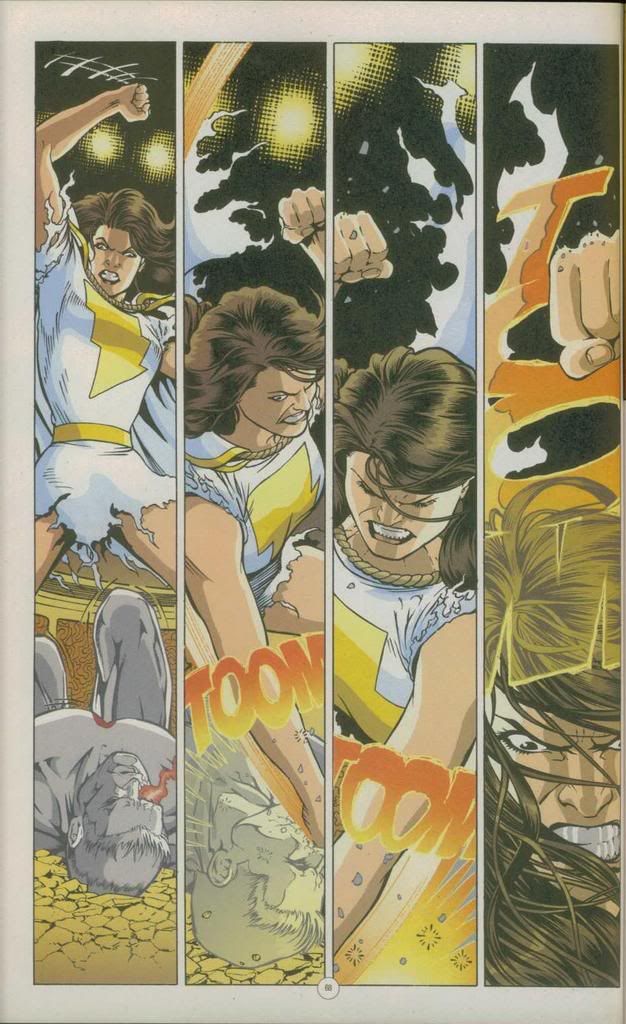

![]()

![]()
![]()
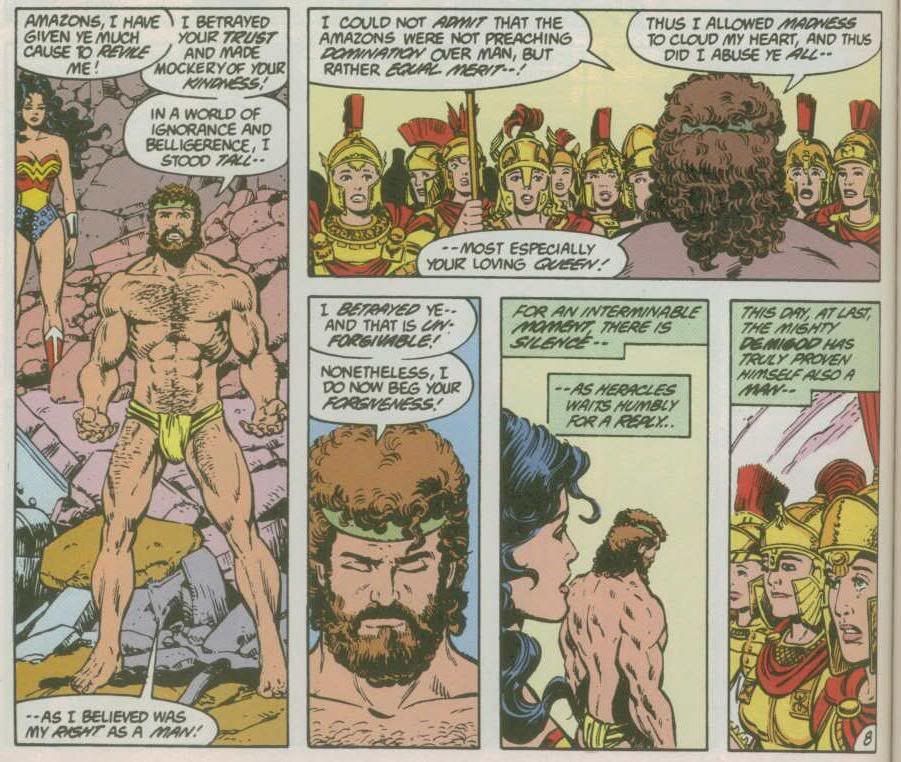
![]()
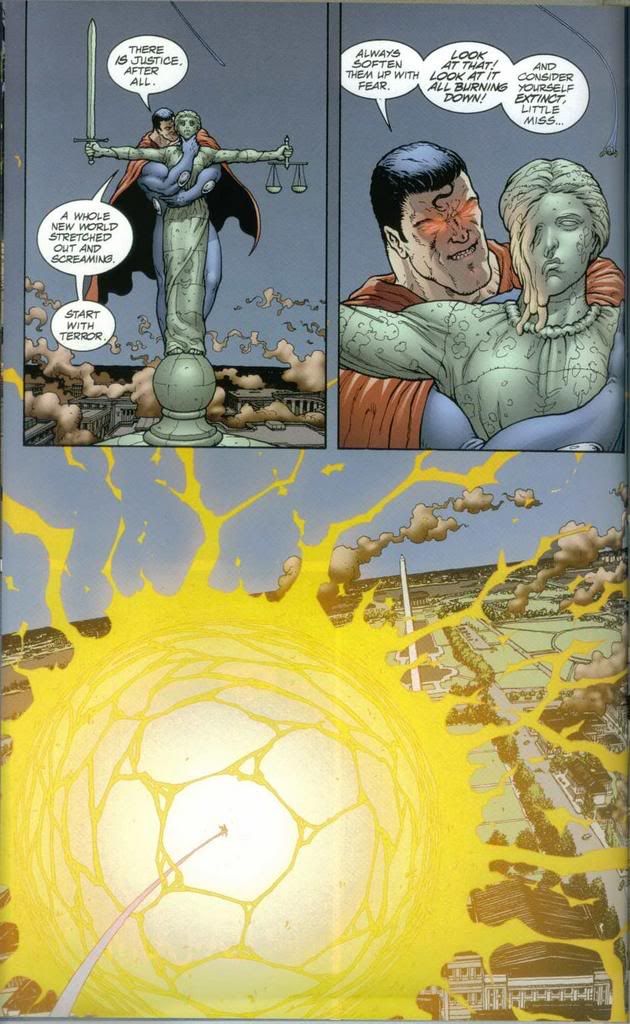
![]()
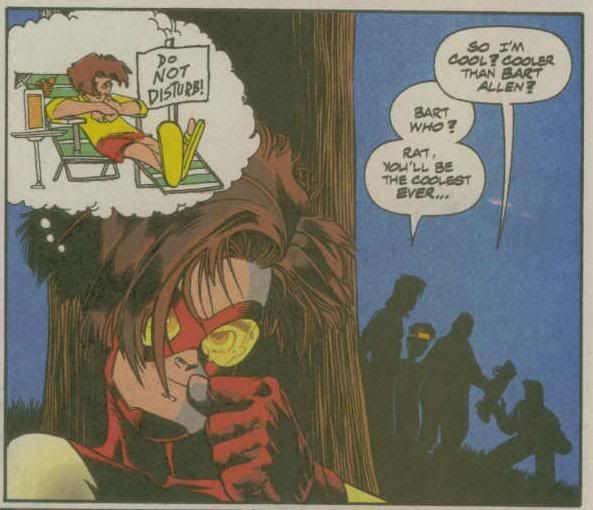
![]()
![]()
![]()

![]()
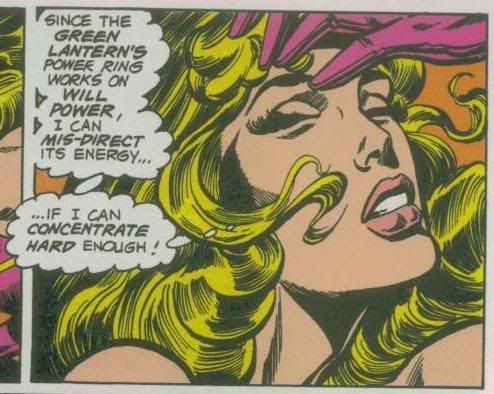
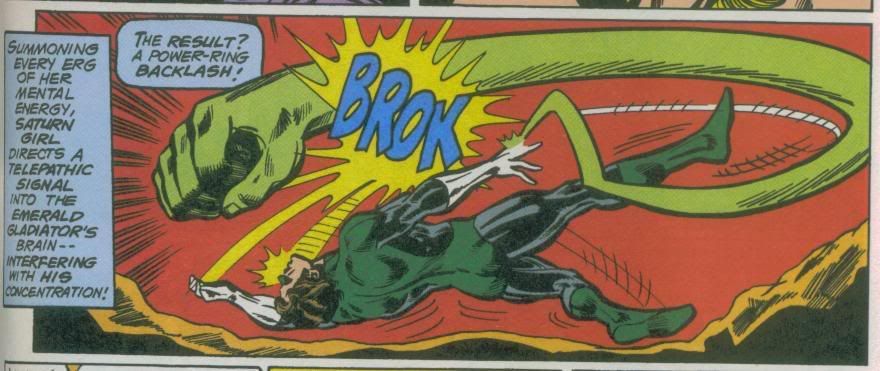
![]()
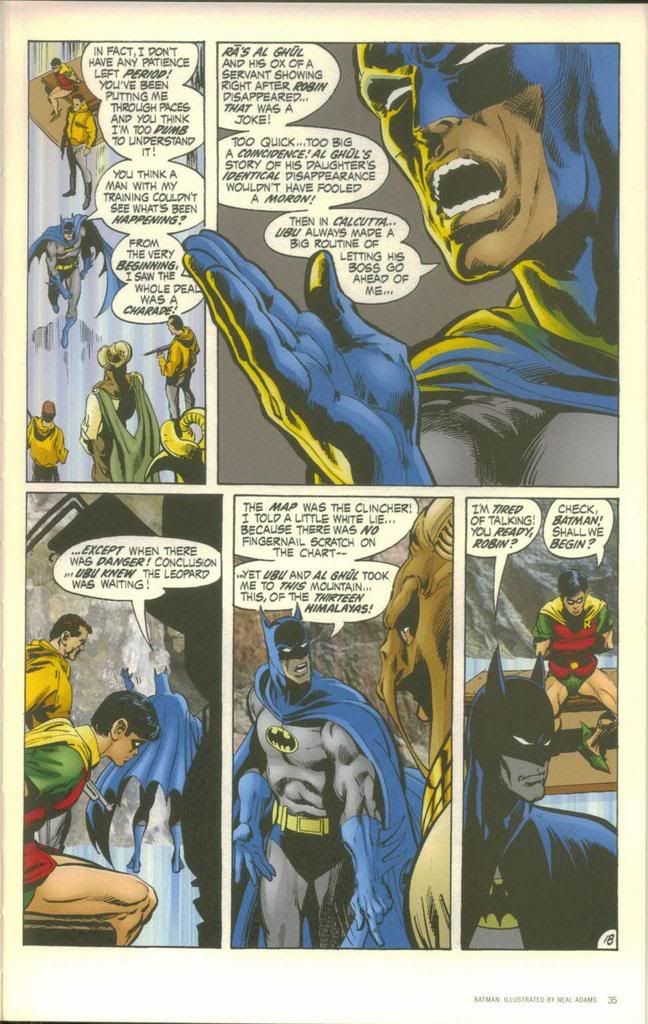
![]()

![]()
![]()
![]()
![]()
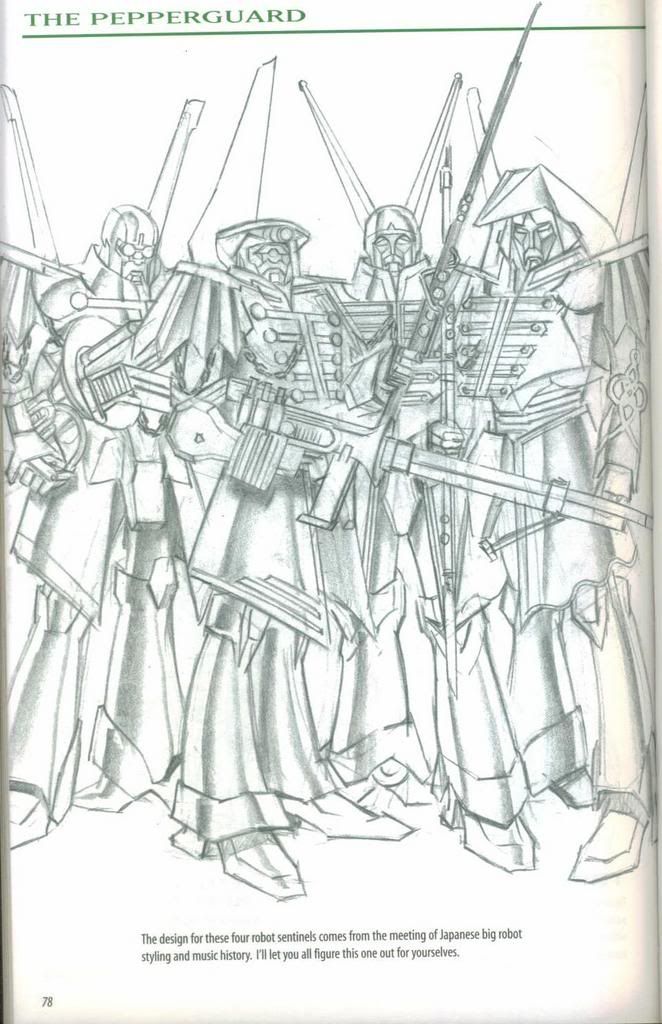
![]()